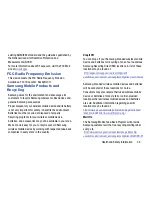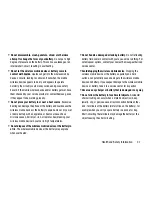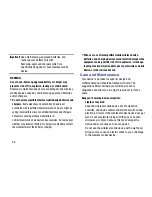
24
Port Filtering
Port Filtering blocks outgoing Internet traffic. When enabled,
only traffic from selected applications can access the
Internet. Traffic is identified by port number.
Note:
DNS should always be enabled when using Port
Filtering. Without DNS, it is not possible to convert a
Domain name (e.g. www.msn.com) to an IP address.
DNS is used by E-mail, FTP and many other protocols as
well as by Web browsers.
Enable Port Filtering
•
Enable Port Filtering
: Click or touch the checkbox to enable Port
Filtering.
When the featured is enabled only traffic from selected
applications from the Allowed Applications list are allowed access
to the internet.
When the featured is disabled all traffic is allowed to access to the
internet.
Allowed Applications
Click or touch applications you wish to give access to the
internet while the Port Filtering feature is enabled. All other
applications will be blocked.
Custom Applications
Define your own
Allowed Applications
. Define and enable
additional applications.
•
Application Name
: Enter a name for the application you are
defining.
•
Port Range
: Define the ports used by the application. These ports
refer to outgoing traffic.
–
For a single port, enter the port number in both the
Start Port
and
End Port
fields.
–
For a port range, enter the beginning of the range in the
Start
Port
field and the end of the range in the
End Port
field.
–
Up to 5 ports or port ranges can be defined. Use as many rows
as necessary; unused rows can be left blank.
•
Port Type
: For each port range (each row), select the protocol
(TCP, UDP, or both) used by that port range.






























